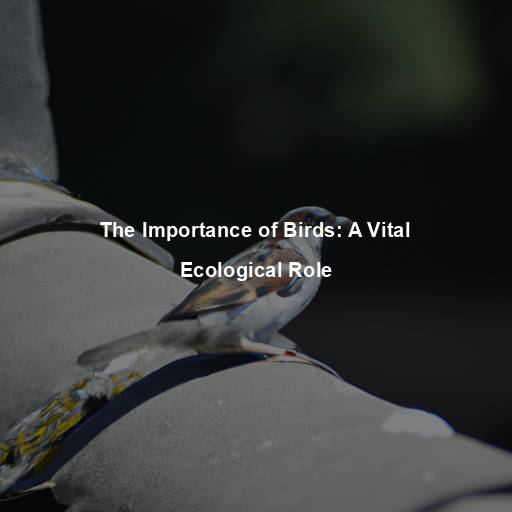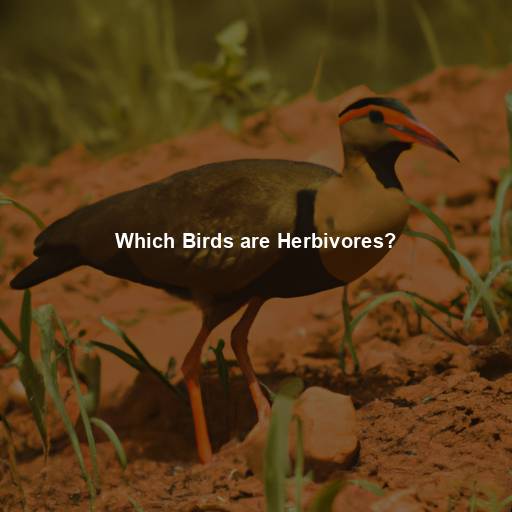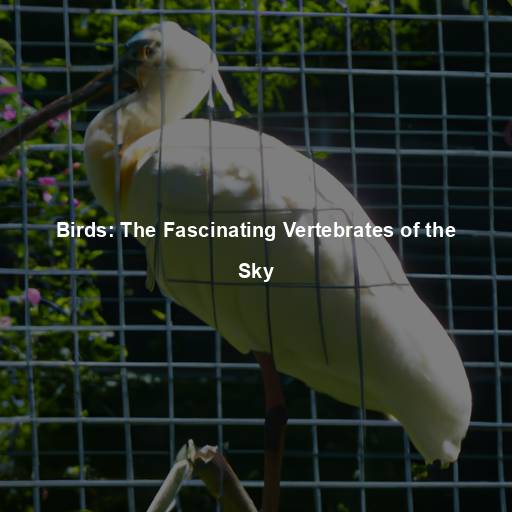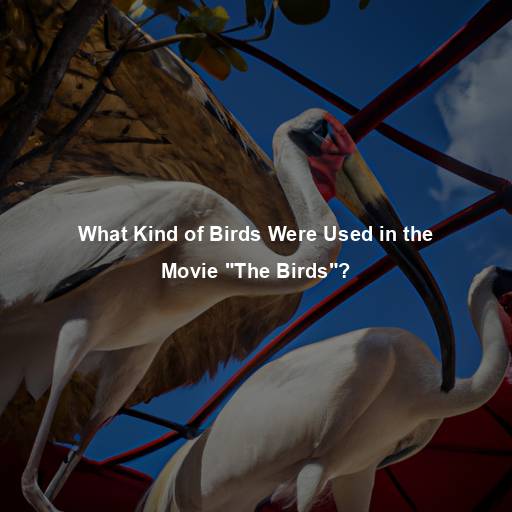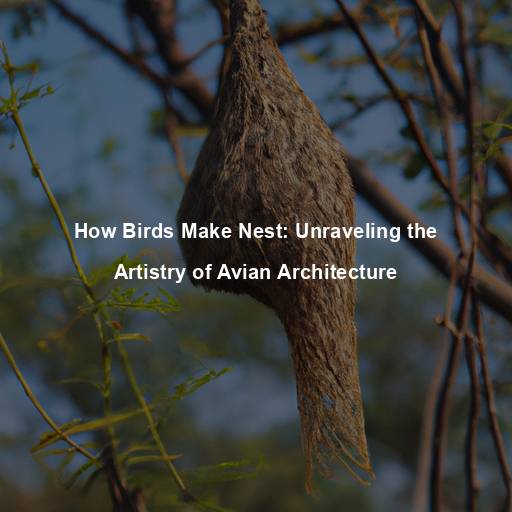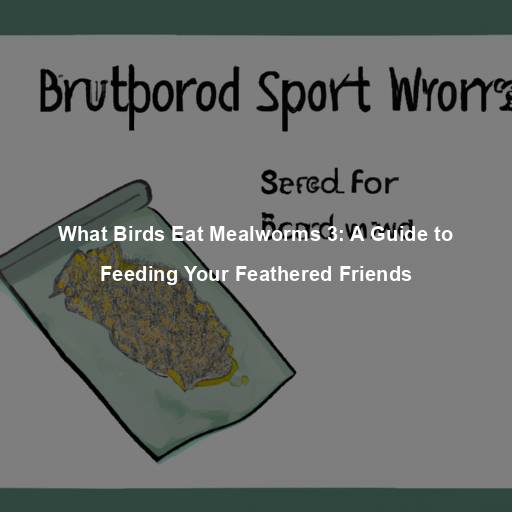The Importance of Birds: A Vital Ecological Role
Last Updated on October 23, 2023 by Evan
Contents [hide]
- 1 Understanding the Significance of Birds in Our Ecosystem
- 1.1 Birds as Pollinators: Nature’s Winged Gardeners
- 1.2 Seed Dispersal: Agents of Biodiversity
- 1.3 Predator-Prey Dynamics: Maintaining Balance in Nature
- 1.4 Nutrient Cycling: Nature’s Cleanup Crew
- 1.5 Ecosystem Engineers: Modifying Habitats
- 1.6 Indicators of Environmental Health: Sentinels in the Wild
- 1.7 Aesthetics and Cultural Significance: Connecting Humans to Nature
- 2 Preserving the Wings of Our Ecosystem
- 3 Migratory Birds: Global Connections and Conservation Challenges
- 4 Birds as Indicators of Environmental Change
- 5 Bird Conservation: Actions for a Sustainable Future
- 6 The Time to Act is Now
- 7 Birds and Human Well-being
- 8 Conservation Challenges and Solutions
- 9 FAQs for How Important Birds Are
Understanding the Significance of Birds in Our Ecosystem
Birds, with their vibrant colors, melodious songs, and graceful flight, have always captivated our hearts and inspired our imagination. Yet, their significance extends far beyond their aesthetic appeal. Birds play a crucial role in maintaining the delicate balance of our ecosystem. From pollination to seed dispersal, pest control to nutrient cycling, these avian creatures are nature’s unsung heroes.
Birds as Pollinators: Nature’s Winged Gardeners
From the elegant dance of bees to the delicate flutter of butterflies, nature’s pollinators play a vital role in the intricate web of life. Among them, birds emerge as unexpected heroes, their contribution to the pollination process both mesmerizing and profound. With a whimsical grace, they embark on a quest for nectar, unknowingly carrying pollen grains from one blossom to another, an unintentional act of botanical matchmaking. The marvel of hummingbirds and sunbirds, their beaks and tongues perfectly designed to sip nature’s sweet elixir, underscores the astonishing symbiosis between avian companions and the plant kingdom – a dance of existence that breathes life into ecosystems and nourishes the abundance of fruits and seeds for countless creatures.
Seed Dispersal: Agents of Biodiversity
Birds act as vital agents of seed dispersal, effectively transporting seeds across vast distances. With their ability to cover extensive territories, birds help plants colonize new areas, promoting biodiversity. As birds consume fruits and berries, they play a crucial role in the dispersal of seeds through their droppings. This process allows plants to establish themselves in new habitats, increasing their chances of survival and enhancing genetic diversity within plant populations.
Predator-Prey Dynamics: Maintaining Balance in Nature
Birds, positioned at various levels of the food chain, contribute to the delicate balance of predator-prey dynamics. Raptors, such as eagles and hawks, help control rodent populations by preying on them. This natural pest control mechanism prevents unchecked multiplication of herbivorous mammals, thereby protecting vegetation and maintaining the balance within ecosystems. By regulating prey populations, birds help prevent ecological imbalances that can have cascading effects throughout the food web.
Nutrient Cycling: Nature’s Cleanup Crew
The natural world, filled with its complex and often perplexing mechanisms, never ceases to amaze us. Take, for example, the role that birds, specifically those with a penchant for scavenging and feasting on carrion, play in the grand tapestry of nutrient cycling. These avian creatures, acting as nature’s unsung heroes, swoop down upon carcasses and decaying matter, weaving a delicate web that prevents the insidious spread of diseases and ensures the seamless flow of essential nutrients back into the waiting arms of our delicate ecosystems. Just like a diligent cleanup crew, vultures gracefully take center stage, diligently removing animal carcasses from the equation and bravely reducing the lurking risk of infections and diseases.
Ecosystem Engineers: Modifying Habitats
In the vast tapestry of nature’s intricate workings, there exist certain avian virtuosos, whose actions reverberate far beyond their feathered confines. These ingenious birds, such as the fearless woodpeckers, wield their beaks as tools of transformative creation, fashioning cavities within tree trunks, akin to architectural masterpieces. These sanctuaries of arboreal engineering play host not only to their industrious architects, but also bestow refuge upon a myriad of other enchanted inhabitants, including tiny bats and agile small mammals. These dramatic alterations to the landscape unravel the delicate threads of biodiversity and showcase the interconnectedness of organisms in their bewildering dance of life.
Indicators of Environmental Health: Sentinels in the Wild
Birds play a captivating role in unraveling the enigmatic tapestry of our environment. These marvelous creatures, with their astonishing ability to adapt and echo the changes in their surroundings, are heralded as the quintessential “sentinel species”. By closely observing their intricate behaviors and tracking their populations, we are granted remarkable glimpses into the delicate balance of our ecosystems. The disconcerting decline of these feathered ambassadors should serve as an alluring clarion call to safeguard their habitats, not only to ensure their survival but to decipher the cryptic code of our planet’s well-being.
Aesthetics and Cultural Significance: Connecting Humans to Nature
Beyond their ecological importance, birds hold immense cultural and aesthetic significance. Their enchanting melodies have inspired countless composers, poets, and artists throughout history. From the mythical phoenix to the symbolic dove of peace, birds have been woven into the fabric of human culture, representing freedom, beauty, and spirituality. Birdwatching, a popular pastime for many nature enthusiasts, allows us to connect with the natural world and appreciate the diversity and wonder of these feathered creatures.
Preserving the Wings of Our Ecosystem
In a world where environmental challenges loom large, it’s more important than ever to grasp the intricate web of connections that make up our planet’s delicate ecosystem. As we delve into the role of birds, we find ourselves confronted with a perplexing and awe-inspiring reality: these feathered creatures are not mere bystanders in the natural world, but rather, integral players in its intricate dance.
Beyond their melodic songs and vibrant plumage, birds also serve as unsung heroes in the realm of pest control. By feasting on insects and rodents, they help keep populations in check, providing a natural and sustainable alternative to chemical pesticides. It’s a burst of insight that surprises and challenges our preconceived notions about these avian allies.
But the significance of birds doesn’t stop there. Their invaluable services extend beyond pest regulation, encompassing vital roles as pollinators and seed dispersers. As they flit from flower to flower, they facilitate the pollination process, ensuring the reproduction of countless plant species and the continued growth of our diverse ecosystems. Through their daily foraging activities, they effectively disperse seeds, acting as nature’s own gardeners, nurturing the cycle of life.
Yet, amidst the backdrop of habitat destruction and human encroachment, the future of these remarkable creatures hangs in the balance. Our responsibility as custodians of the environment is clear: we must advocate for sustainable practices, preserve vital bird habitats, and raise public awareness about the significance of biodiversity. Only by working together can we create a future where birds thrive, enriching our lives and our planet with their remarkable presence.
So let us embrace the urgency of the moment, weaving together the threads of conservation and appreciation for nature’s winged wonders. In doing so, we can ensure that the symphony of bird songs continues to echo in our forests and fields, reminding us of the interconnectedness of all life on our perplexing, beautiful planet.
Insectivorous Birds: The Pest Controllers
Birds play a significant role in pest control by consuming vast quantities of insects. Insectivorous birds, such as swallows, flycatchers, and warblers, are experts at catching insects mid-flight. These avian hunters help keep insect populations in check, reducing the need for chemical pesticides in agricultural and natural ecosystems. By relying on birds as natural allies in pest control, we can promote sustainable and environmentally friendly practices.
The Economics of Pest Control
When it comes to the intricate dance between nature and economics, birds take center stage. These feathered wonders offer more than just visual delight; they play a crucial role in pest control. By embracing bird-friendly practices, farmers and gardeners can tap into a world of benefits. Not only do they enjoy the beauty of these avian allies, but they also experience reduced crop damage and lower pest management costs.
Migratory Birds: Global Connections and Conservation Challenges
The Wonders of Bird Migration
Bird migration is a marvel of nature, as these winged travelers embark on long and perilous journeys across continents. Migratory birds navigate vast distances, guided by celestial cues, landmarks, and magnetic fields. They connect diverse ecosystems, as they breed in one region and winter in another. Their movements create a network of global connections, highlighting the interdependence of different habitats and the need for international collaboration in their conservation.
Conservation Challenges for Migratory Birds
Migratory birds face numerous challenges throughout their journeys, including habitat loss, climate change, urbanization, and obstacles such as buildings and communication towers. The destruction of stopover sites, where birds rest and refuel during migration, further threatens their survival. Protecting key habitats along migration routes and implementing measures to reduce collisions with man-made structures are crucial for ensuring the survival of these remarkable travelers.
The Ramsar Convention: Protecting Wetland Habitats
The enchanting wetlands, those mystical landscapes intertwined with water and earth, are not just mundane patches of land. They are veritable oases bustling with life, offering respite to weary migrant birds on their grand journey across the globe. The Ramsar Convention, a beacon of hope for these magnificent creatures, seeks to preserve and nurture these wetland havens, ensuring a sustainable future for both the delicate ecosystems and the feathered inhabitants that call them home. As nations unite under the Ramsar umbrella, pledging their commitment to safeguard these precious habitats, a symphony of international collaboration reverberates, bringing forth a harmonious chorus of conservation efforts that will undoubtedly shape the destiny of migratory birds.
Birds as Indicators of Environmental Change
Avian Response to Climate Change
Birds are highly sensitive to environmental changes, making them valuable indicators of climate change impacts. As temperatures shift and habitats alter, bird species may adapt, relocate, or face population declines. Scientists study bird populations and behaviors to understand the effects of climate change on ecosystems. By monitoring these changes, we can better comprehend the broader impacts on biodiversity and take appropriate conservation actions.
Bird Diversity and Ecological Resilience
Birds are the unsung heroes of our ecosystems, playing an essential role in maintaining ecological balance. The web of life is delicately woven, with each species contributing its own piece to the intricate puzzle. From the nectar-drinking hummingbirds to the bug-hunting warblers, every bird has a distinctive role that keeps the ecosystem in harmony. Disturb this delicate dance, and the consequences can be perplexing, with ripple effects cascading through the ecosystem.
Bird Conservation: Actions for a Sustainable Future
Preserving and Restoring Bird Habitats
The bustling lives of our avian companions rely greatly on the delicate balance of their natural habitats. A symphony of diverse bird species finds solace and sustenance in the lush wetlands, enchanting forests, expansive grasslands, and captivating coastal areas. The perplexing path to preservation lies in embracing sustainable land management practices while minimizing the fragmentary impacts on their sacred dwelling places. Embracing this tapestry of complexity will pave the way for protected areas that safeguard the continuity of our cherished feathered allies for generations to come.
Promoting Bird-Friendly Practices
Individuals can contribute to bird conservation through simple yet impactful actions. Creating bird-friendly gardens by planting native vegetation, providing water sources, and avoiding the use of pesticides creates vital habitats in urban and suburban areas. Additionally, practicing responsible birdwatching, supporting bird conservation organizations, and advocating for policies that protect bird habitats are effective ways to make a difference.
Education and Awareness
Understanding the profound connection between education and bird conservation is a vital cornerstone. Instilling a profound sense of awe and appreciation for our feathered friends prompts a collective responsibility, igniting a fervent desire to safeguard their existence. By embarking on an all-encompassing journey that involves communities, educational institutions, and grassroots organizations, we lay the foundation for a generation driven by empathy and dedication to safeguard our avian allies. Together, we can instigate a transformative ripple effect, nurturing a collective mindset that cherishes and defends these magnificent creatures.
The Time to Act is Now
In our fast-paced world, it’s easy to overlook the significance of something as seemingly small as a bird. But take a moment to consider their intricate adaptations and the vital role they play in our ecosystem. From seed dispersal to insect control, birds offer invaluable services that contribute to the health and robustness of our planet.
Yet, as we encounter reports of declining bird populations and the ever-increasing degradation of their habitats, a sense of urgency arises. The need to protect and conserve these remarkable creatures becomes more pressing than ever.
If we truly acknowledge the importance of birds, it is essential that we actively support conservation initiatives. Whether through donations, volunteer work, or advocating for stricter regulations, there are countless ways we can contribute to their preservation.
Moreover, we should adopt bird-friendly practices in our daily lives. These practices can range from keeping cats indoors and using bird-safe pesticides to creating bird-friendly gardens and providing nest boxes. Small actions can have significant impacts, and by making conscious choices, we can help ensure a sustainable future where birds continue to grace our skies.
In doing so, we not only safeguard the well-being of birds but also remind ourselves of the interconnectedness of all living beings. Birds serve as a reminder that our actions ripple through the ecosystem, affecting everything from plants to insects to mammals.
Let us embrace the responsibility to be guardians of our feathered friends and champions of biodiversity conservation. By doing so, we not only honor the awe-inspiring diversity of species, but we also ensure the continued flourishing of our own existence in this delicate web of life.
Birds as Seed Predators
While birds are often celebrated for their beauty and melodious songs, their role as seed predators should not be overlooked. Some bird species, such as finches and sparrows, feed on seeds, contributing to the regulation of plant populations. By consuming seeds, birds can prevent the overabundance of certain plant species, promoting biodiversity and maintaining the balance of ecosystems.
Birds as Scavengers and Decomposers
A fascinating web of interconnectedness weaves through our natural world, and birds find themselves at the heart of it all. Beyond their delightful melodies and mesmerizing flight, these enigmatic creatures play an essential role as both scavengers and decomposers. Picture the majestic vultures and the crafty crows: guardians of cleanliness, tirelessly patrolling the land to rid it of the decaying remnants that could spell doom for us all. Yet, their efforts transcend the surface, as their voracious appetites for detritus lead them into the intricate dance of decomposition.
Birds and Human Well-being
The Therapeutic Power of Birdwatching
In today’s fast-paced world, where technology dominates our every waking moment, there is a burgeoning fascination with the art of birdwatching. This enchanting pastime, which involves observing our feathered friends in their natural domains, has captivated the hearts of many, becoming a cherished recreational pursuit. However, there is more to this seemingly simple activity than meets the eye. Beyond its recreational allure, birdwatching is emerging as a powerful remedy for our chaotic minds and restless souls.
Birds as Inspiration in Art and Culture
For centuries, birds have captivated the hearts and minds of creative souls across the globe. Artists, writers, and musicians have drawn upon the dazzling colors of their feathers, the elegance of their flight, and the ethereal melodies of their songs to craft works that defy explanation. From ancient tales spun around mythical creatures to modern masterpieces that push the boundaries of artistic expression, the significance of birds looms large. Weaving through the tapestry of our cultural heritage, they represent simultaneous wonder and enigma, leaving us in a state of perpetual awe and admiration.
Conservation Challenges and Solutions
Habitat Loss and Fragmentation
The plight of our feathered friends is undoubtedly perplexing as they grapple with a myriad of hurdles. Among these hurdles, the loss and fragmentation of their habitats loom large. Alas, it is the hand of humanity, with its relentless deforestation, urbanization, and agricultural sprawl, that has dealt this devastating blow. As these once lush landscapes shrink and splinter, birds find themselves adrift in a sea of isolation, bereft of the resources they once thrived upon, and easy prey for opportunistic predators.
Climate Change and Its Impacts on Birds
Birds all around the globe are facing a real and daunting enemy: climate change. You see, rising temperatures, erratic rainfall, and unpredictable seasonal shifts have really thrown a wrench in the intricate relationship between our feathered friends and their habitats. It’s no surprise then that we’re witnessing some bizarre responses – from birds flying off at different times, to getting their breeding schedules all mixed up and having a tough time finding their favorite snacks. So, if we want to help these lovely creatures survive in this topsy-turvy world, we better roll up our sleeves and get to work: we need to cut down on those pesky greenhouse gas emissions, protect essential bird habitats, and be ready to adapt our management strategies as the climate keeps on changing.
Invasive Species and Their Impact on Birds
The ever-present threat of invasive species looms ominously over the delicate balance of bird conservation efforts. These interlopers, be they plants or creatures, possess an uncanny ability to upend the natural order, striving for dominance at the expense of their native counterparts. This tumultuous struggle for resources not only disrupts the intricate web of food chains but also wreaks havoc on the very environments birds rely upon. From the relentless predation of eggs, chicks, and adult birds to the widespread alteration of habitats, the severity of this encroachment demands swift and strategic measures to safeguard avian sanctuaries and preserve the invaluable tapestry of native biodiversity.
Collaborative Conservation Efforts
Addressing the complex challenges faced by bird populations requires collaborative efforts at local, regional, and international levels. Government agencies, conservation organizations, scientists, and local communities must work together to implement effective conservation strategies. This collaboration involves habitat restoration, protected area management, public education, policy advocacy, and research initiatives. By joining forces, we can create a network of conservation efforts that span borders and ensure the long-term survival of birds and the ecosystems they inhabit.
FAQs for How Important Birds Are
What is the significance of birds in the ecosystem?
Birds hold a mesmerizing power over our ecosystem, quietly orchestrating a delicate balance that leaves us in awe of their profound contributions. These feathered dynamos, known as pollinators, plant the seeds of life as they flutter from flower to flower, unknowingly cultivating biodiversity. Marvelous raptors, with their keen eyes and swift talons, serve as nature’s pest control, gracefully curbing the rise of tiny mammals and insects, ensuring harmony within our ecological tapestry. And let us not forget the hidden wisdom they possess, for these winged beings act as scribes of our environmental health, their presence and behavior revealing secrets of ecological disharmony and disturbances we often fail to comprehend.
How do birds contribute to seed dispersal?
In the vast tapestry of nature’s intricacies, birds emerge as extraordinary champions of seed dispersal, their feathered elegance intertwined with the fascinating realm of botanical propagation. With unrivaled efficiency, these avian marvels digest fruits and gallantly scatter their seeds through the cryptic passage of their droppings. A symbiotic dance unfolds as plants, aided by this aerial entourage, embark on ambitious quests to conquer new territories and spur the rebirth of untamed woodlands and diverse havens. Nature, in its infinite wisdom, has bestowed upon birds the task of savoring fruits too grand for their diminutive counterparts, ensuring the seeds’ relentless will to persevere and blossom anew.
What role do birds play in controlling insect populations?
In the choreography of life, birds emerge as unexpected heroes, donning feathers of resolute purpose. With breathtaking agility, swallows, flycatchers, and warblers pirouette through the air, their delicate wings a blur of determination. In their audacious pursuit, they become nature’s unsung sentinels, vanquishing insect invaders with astonishing precision. With this celestial ballet, birds not only safeguard the fragile balance of our delicate ecosystems but also bestow upon us, mere stewards of the land, the gift of sustainable and harmonious agriculture, liberated from the shackles of pesticides and pestilence.
How do birds impact the food chain?
Birds occupy different trophic levels in the food chain and have significant impacts on the overall balance and functioning of ecosystems. As prey for larger predators, birds contribute to the survival and abundance of those predator species. Additionally, birds’ feeding habits can affect the abundance and distribution of their prey species, influencing the composition of plant and animal communities. Through their interactions and dependencies, birds connect various components of the food chain, enhancing ecosystem resilience.
What are the economic benefits of birds?
Birds provide numerous economic benefits to humans. They are important for ecotourism, attracting birdwatchers and nature enthusiasts from around the world. Birdwatching tourism generates substantial revenue and supports local economies. In addition, birds contribute to pest control on agricultural lands, reducing the need for costly pesticides. They also aid in pollination, supporting crop production and the overall functioning of ecosystems, which has indirect economic advantages. Finally, birds have cultural and recreational value, enriching our lives through their beauty, songs, and presence in our natural surroundings.

